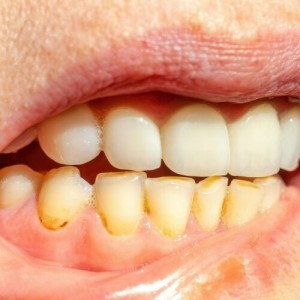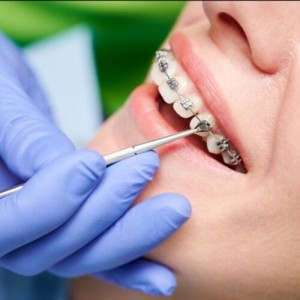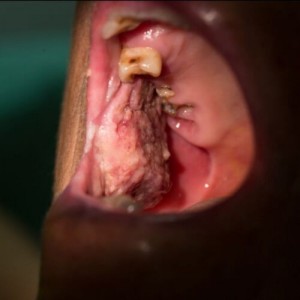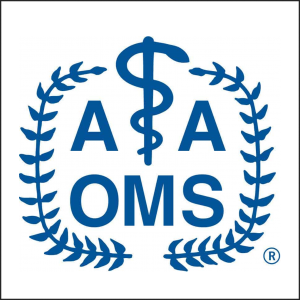
Use of hawthorne and spoon-feeding effects to modify oral hygiene habits. Two-factorial randomized controlled trial
Authors: MICHELE NIERI, DALILA MARTINI, MONICA GIANI, UMBERTO PAGLIARO, LORENZO FRANCHI, VALENTINA ROMANELLI
PURPOSE. The aim of the study was to estimate the Hawthorne effect through the patients’ awareness of being observed regarding the detection of bacterial plaque with the use of a periodontal chart or the awareness of being observed in toothbrushing manoeuvres.
MATERIALS AND METHODS
A randomized factorial trial with two-week follow-up was conducted. The factors investigated were: awareness of being observed in the detection of bacterial plaque accumulation and bleeding on probing (Factor Chart, FC), and awareness of being observed in toothbrushing manoeuvres (Factor Toothbrush, FT). Forty adult patients from a private dental practice were recruited, and divided into 4 groups of 10 patients each, which were randomly assigned to one, both or none of the study factors.
Two weeks later, full-mouth plaque score (FMPS) and full-mouth bleeding score (FMBS) were evaluated by a blinded examiner. The randomization list was computer generated, and allocation was concealed by using opaque sealed numbered envelopes.
RESULTS
Regarding FMPS, there was a positive Hawthorne effect in the case of FC, but it was not statistically significant [difference in FMPS: -4.5 95%CI from -14.5 to 5.4, P-value = 0.359], while a statistically significant negative Hawthorne effect was recorded in the case of FT [difference in FMPS: +10.0 95%CI from 0.1 to 19.9, P-value = 0.048].
Regarding FMBS, there was a positive, but not statistically significant, Hawthorne effect in the case of FC [difference in FMBS: -3.7 95%CI from -8.1 to 0.8, P-value = 0.103], while a statistically significant negative Hawthorne effect was recorded for FT [difference in FMBS: +5.2 95%CI from 0.8 to 14.8, P-value = 0.023].
CONCLUSIONS
The Hawthorne effect can take on a positive or negative value, depending on the indications given to the patient. The negative effect could be due to the expectation that others will tell us what to do (spoon-feeding effect). The intentional use of the Hawthorne effect to improve home oral hygiene habits is not supported by the results of this study.
 Related articles
Related articles
Oral Hygiene & Prevention 18 September 2025
Oral mucosal lesions and oral hygiene habits in the home‐living elderly
A large epidemiological health investigation, the Helsinki Ageing Study (HAS), was performed in 1989–1991 in Helsinki, Finland.
Oral Hygiene & Prevention 03 September 2025
Oral hygiene care for residents with dementia: a literature review
This paper presents a literature review of oral hygiene care for adults with dementia in residential aged care facilities
Oral Hygiene & Prevention 20 August 2025
Personal oral hygiene and dental caries: A systematic review of randomised controlled trials
To conduct a systematic review of randomised trials assessing the association between personal oral hygiene and dental caries in the absence of the confounding effects of fluoride.
The aim of our study was to qualitatively and quantitatively synthesize the evidence regarding ways to improve motivation of oral hygiene among orthodontic patients
Oral Hygiene & Prevention 04 August 2025
Self-Reported Oral Hygiene Habits and Oral Health Problems of Kuwaiti Adults
The aims of this study were to examine self-reported oral hygiene habits and oral health problems of a sample of adult Kuwaitis
 Read more
Read more
Implantology 17 October 2025
To investigate whether cross-section imaging influences the planning and therapy of standard implant cases in the posterior mandible.
Editorials 17 October 2025
In her new role she is providing direction and supporting initiatives that elevating UFCD's translational research agenda.
Products 17 October 2025
Presto Dental, a new brand affiliated with the Abra Health Group, proudly announces the grand opening of its flagship Connecticut location in Bridgeport. This state-of-the-art.
News 17 October 2025
The American Association of Oral and Maxillofacial Surgeons (AAOMS) celebrated the achievements of more than 30 individuals at the association’s 107th Annual Meeting, Scientific Sessions and...
Phenom, an applied AI company that helps organizations hire faster, develop better, and retain longer, announced The Aspen Group (TAG) earned the Brandon.















